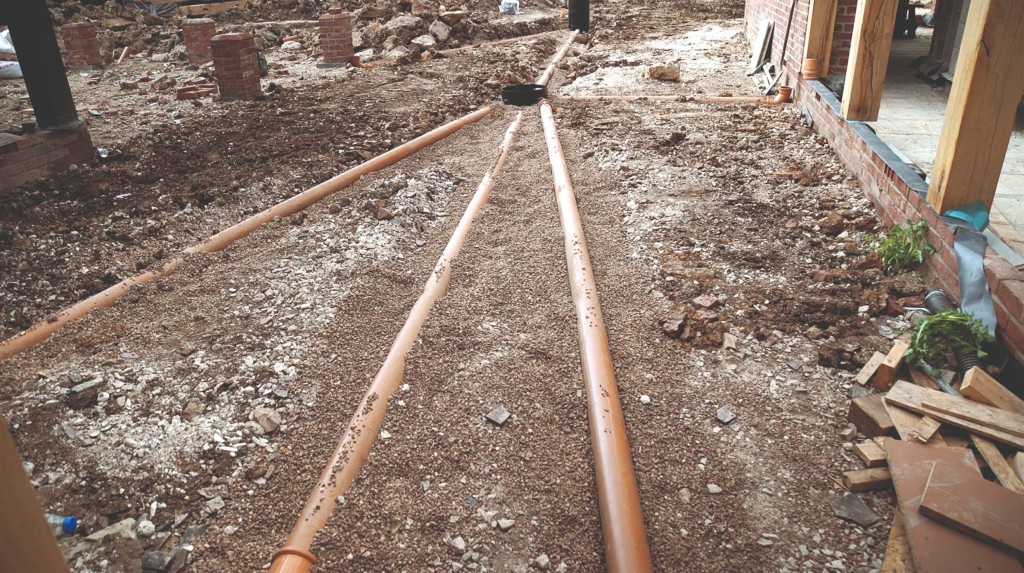Healthy drinking

Caroline Ayres, Director at the BPF Pipes Group, provides some detailed advice for protecting drinking water quality in brownfield sites.
A variety of legislation is relevant to the management of land affected by
historic contamination. This land is known as ‘brownfield.’ Contamination is a material planning consideration – regional or local planning authorities can require assessment of the land and set conditions for the site to be made suitable for intended use. In addition, the Environment Agency and the devolved administrations in Wales, Scotland and Northern Ireland can require risk assessments and mitigation to protect water quality and discharge to rivers.
In preparing to develop a brownfield site, a developer will consider the risks to humans living or working on the site posed by its former use as well as the risks of ingress to the water or wastewater systems.
When developing brownfield sites, care needs to be taken to protect water supplies from contamination. Polyethylene pipes (20mm-1200mm) and polyethylene barrier pipes (20mm-630mm) are used for drinking water systems in the UK. Information on current specifications can be found in the BPF Guidance document ‘Specifications for polyethylene pipe and fittings for water supply, and drains and sewers under pressure’.
Polyethylene pipes are naturally resistant to inorganic compounds such as acids and alkalis, sulphides, chlorides, sulphates or cyanide. Their properties will not be affected by the presence of metals in the soil.
Some organic compounds, which include polycyclic aromatic hydrocarbons (PAH), total petroleum hydrocarbons (TPH), benzene, toluene, ethylbenzene and xylene (BTEX) and phenols, have the potential to permeate polyethylene pipes, as with other plastic pipes and elastomeric sealing rings. The process by which this permeation occurs is complex and difficult to predict, so testing of products in conditions which reflect brownfield sites is essential. Importantly, even where these organic compounds are present on the site and not removed during the remedial works, they may exist at low levels, which means that polyethylene pressure pipe without any barrier layer can still be used.
Where hydrocarbons are shown to be present and a barrier system is selected, the complete system needs to meet the requirements of BS8588 (see more on BS8588 below). This means a barrier pipe with joints which are compatible and tested in conjunction with the pipe to BS8588. This provides assurance of the long-term system performance and gives confidence in the future reliability of the barrier pipe system.
Contaminants in the ground
Polyethylene pipes with an aluminium barrier are routinely used in brownfield applications where potable water needs protecting from possible contaminants in the ground. They are especially useful in larger developments as their longer lengths minimise the number of joints needed, saving installation time and the risk of contamination. The BPF Pipes Group has published guidance on laying the appropriate types of pipes and fittings in such ground and emphasises the importance of specifying and installing such products correctly.

BS8588: 2017 is the industry standard for polyethylene piping systems with an aluminium layer. It confirms, through testing, that a pipe and fitting in combination successfully act as a barrier to organic contaminants, ensuring that concentrations remain below a threshold to protect drinking water quality. Fittings for connection of PE barrier pipes shall comply with WIS 4-32-11: 2018 up to 63mm diameter or BS8561: 2021 for large sizes.
Both pipe and fitting need to be mechanically sound and together be capable of delivering a leak-tight system over the product lifetime.
So, to fully comply with BS8588, manufacturers need to declare the combinations of pipes, fittings and fusion joints which have been proven to meet this standard.
Purchasing from a member of the BPF Pipes Group will ensure that confidence in the whole system can be assured as they offer complete pipe and fitting solutions which are tested and awarded a BSI Kitemark.
In addition, the products offered by members comply with Water Regulations, the purpose of which is to ensure that public health is protected by preventing any contamination of public water supplies.
Barrier integrity
The true benefit of installing these barrier systems is peace of mind for water suppliers and their consumers when it comes to the quality of water at the tap. Integrity of the barrier to contamination is assessed through the test for resistance to permeation which is designed to demonstrate that components in a system can together adequately resist the ingress of hydrocarbon contaminants.
The BPF Pipes Group recommends using fittings which have been fully assessed and certified by a third party, such as the BSI Kitemark, to WIS 4-32-11 or BS8561. Where certification is not available, specifiers are advised to check that all tests included in the specification have been completed. It also strongly encourages those specifying these types of pipes and fittings to check that permeation testing under BS8588 has been carried out to the actual pipe and fitting combination being offered, and to check that mechanical performance has been fully assessed to WIS 4-32-11 or BS8561 using the fittings and barrier pipe for which they are being offered.
The BPF Pipes Group strives to promote best practice in the construction and use of all types of plastic pipes and fittings and its website contains many free-to- access technical guides and practical guidance.







